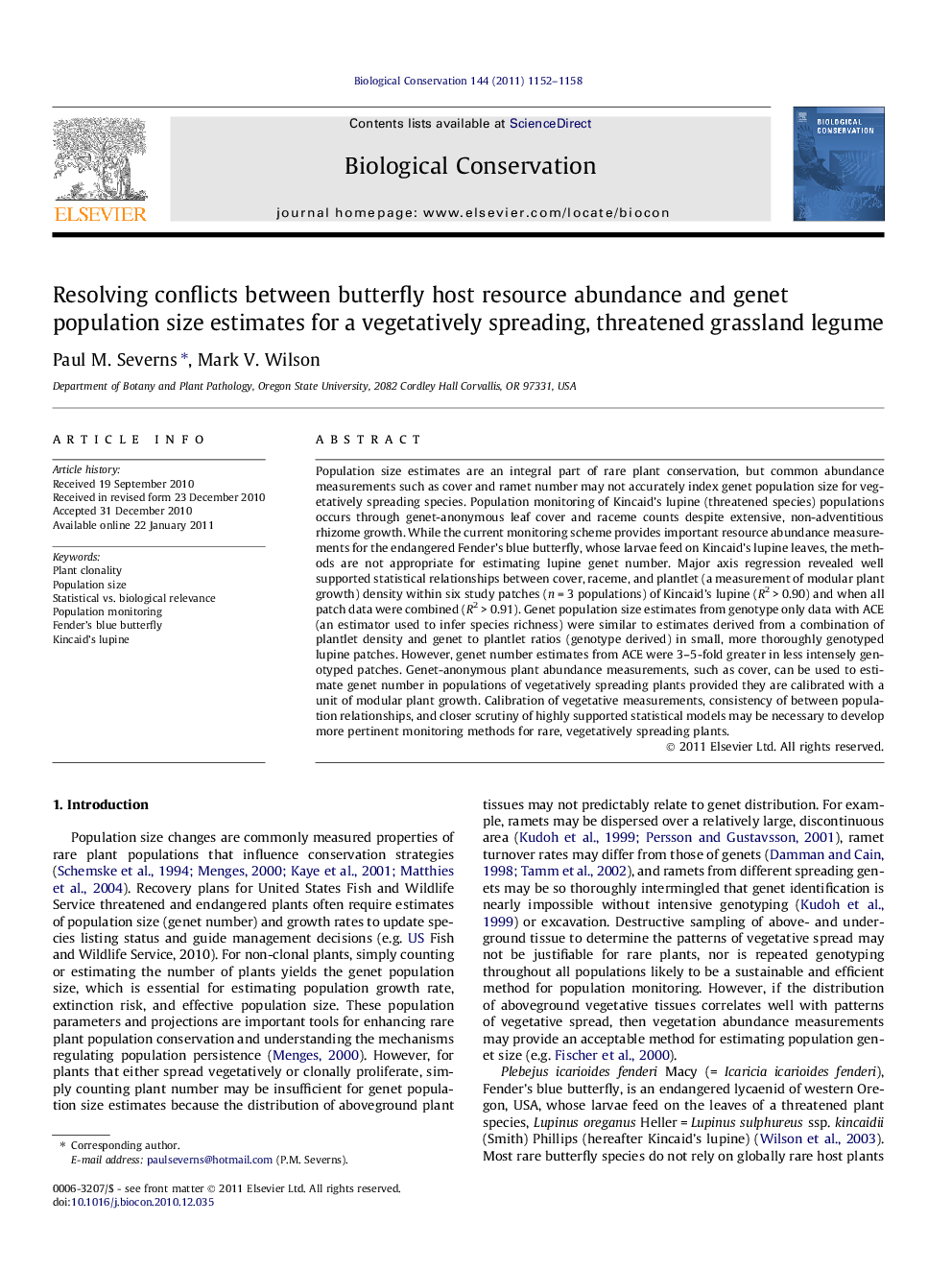| کد مقاله | کد نشریه | سال انتشار | مقاله انگلیسی | نسخه تمام متن |
|---|---|---|---|---|
| 4385636 | 1304545 | 2011 | 7 صفحه PDF | دانلود رایگان |

Population size estimates are an integral part of rare plant conservation, but common abundance measurements such as cover and ramet number may not accurately index genet population size for vegetatively spreading species. Population monitoring of Kincaid’s lupine (threatened species) populations occurs through genet-anonymous leaf cover and raceme counts despite extensive, non-adventitious rhizome growth. While the current monitoring scheme provides important resource abundance measurements for the endangered Fender’s blue butterfly, whose larvae feed on Kincaid’s lupine leaves, the methods are not appropriate for estimating lupine genet number. Major axis regression revealed well supported statistical relationships between cover, raceme, and plantlet (a measurement of modular plant growth) density within six study patches (n = 3 populations) of Kincaid’s lupine (R2 > 0.90) and when all patch data were combined (R2 > 0.91). Genet population size estimates from genotype only data with ACE (an estimator used to infer species richness) were similar to estimates derived from a combination of plantlet density and genet to plantlet ratios (genotype derived) in small, more thoroughly genotyped lupine patches. However, genet number estimates from ACE were 3–5-fold greater in less intensely genotyped patches. Genet-anonymous plant abundance measurements, such as cover, can be used to estimate genet number in populations of vegetatively spreading plants provided they are calibrated with a unit of modular plant growth. Calibration of vegetative measurements, consistency of between population relationships, and closer scrutiny of highly supported statistical models may be necessary to develop more pertinent monitoring methods for rare, vegetatively spreading plants.
Journal: Biological Conservation - Volume 144, Issue 3, March 2011, Pages 1152–1158